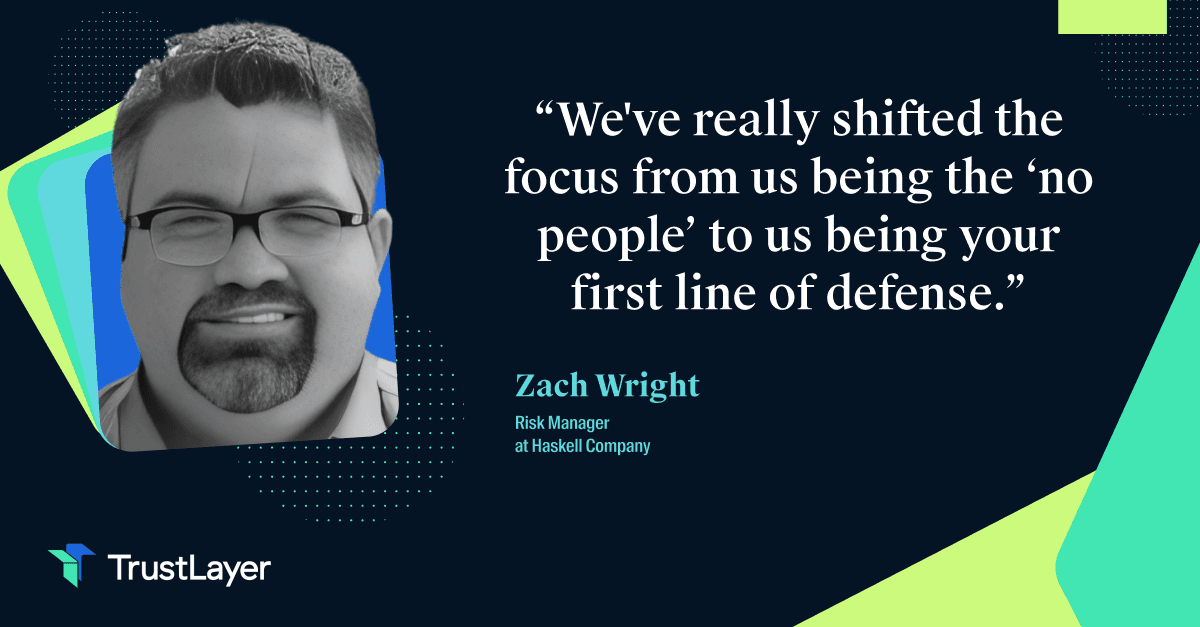In an ever-evolving business landscape, managing risks effectively ensures smooth operations and protects against unforeseen liabilities. One of the vital cogs in this machinery is the insurance verification process, particularly regarding tracking Certificates of Insurance (COIs). This article will delve into best practices for efficient COI tracking, helping businesses safeguard their interests while maintaining compliance.
Understanding the Importance of Insurance Verification
Insurance verification confirms that an entity possesses the necessary insurance coverage to protect against risks associated with services or operations. A thorough verification shields businesses from potential financial losses and affirms that partners, vendors, and contractors are committed to maintaining proper coverage.
According to a report by the Insurance Information Institute, approximately 30% of small businesses will eventually encounter a significant liability claim. This stark reality emphasizes the necessity of rigorous insurance verification procedures. Companies can mitigate risks arising from accidents or negligence by ensuring that all parties have adequate coverage.
The Role of Insurance Verification in Risk Management
Adequate insurance verification is crucial for risk management strategies. It helps identify potential gaps in coverage and strengthens an organization's legal protection framework. When a business verifies that its contractors carry appropriate insurance, it diminishes the risk of financial repercussions due to accidents during contract execution.
Moreover, insurance verification plays a proactive role in maintaining corporate relationships. It fosters trust and transparency between businesses, essential for successful collaborations. When partners feel assured that the company they are dealing with is vigilant in its risk management practices, it enhances the overall business environment. This trust can lead to more favorable negotiation terms and a willingness to engage in long-term partnerships as businesses recognize the value of working with responsible entities.
Critical Elements of an Effective Insurance Verification Process
To establish a sound insurance verification process, various key elements should be in place:
- Documentation Requirements: Clearly outline the required documentation, such as Certificates of Insurance, endorsements, and liability limits.
- Verification Timeline: Set a specific timeframe for verification to ensure coverage does not lapse during the contracting phase.
- Record-Keeping: Maintain thorough records of all verified documents for future reference and compliance audits.
- Regular Updates: Implement a system for monitoring expiration dates and other critical updates to coverage.
By focusing on these elements, companies can create an organized and efficient insurance verification framework that caters to their needs. Additionally, leveraging technology can significantly enhance the effectiveness of the verification process. Automated systems can streamline documentation collection, send reminders for renewals, and even provide analytics to assess risk exposure across various partnerships. This saves time and ensures that businesses remain compliant with industry standards and regulations, further solidifying their reputation in the marketplace.
Furthermore, educating employees about the importance of insurance verification can foster a culture of accountability within an organization. When team members understand the implications of inadequate coverage and the potential risks, they are more likely to prioritize thorough verification practices. Training sessions and workshops can be beneficial in reinforcing these concepts, ensuring that everyone involved in the contracting process is aligned with the company’s risk management objectives.
Best Practices for Efficient Certificate of Insurance (COI) Tracking
Once a robust insurance verification process is established, the next step is to ensure efficient tracking of Certificates of Insurance. This is not just about organization; it’s about creating a workflow that enhances productivity while minimizing risk.
Utilizing Technology for COI Tracking
Technology has revolutionized the way businesses manage their COIs. Employing specialized software solutions can streamline the process significantly. By leveraging technology, teams can automate reminders for expiring certificates, reducing the chances of missing crucial deadlines.
According to a recent industry analysis, organizations that invest in COI tracking technologies see a 50% decrease in operational risks related to insurance coverage oversight. This statistic highlights the potential benefits of adopting digital solutions to manage COI tracking. Furthermore, these technologies often come equipped with advanced analytics capabilities, allowing businesses to generate insightful reports on their insurance coverage status, which can be invaluable for strategic planning and risk management.
Streamlining the COI Tracking Process
Streamlining the COI tracking process further enhances efficiency. Here are some strategies to consider:
- Centralized Repository: Create a centralized database where all COIs are stored, making it easier for teams to access the necessary information when needed.
- Standardized Formats: Develop standardized formats for COIs to ensure clarity and consistency across documentation.
- Frequent Communication: Foster open lines of communication with vendors and partners to ensure timely submission of updated COIs.
Implementing these strategies can help organizations create an agile COI tracking system that minimizes delays and inaccuracies. Additionally, regular staff training sessions on the importance of COI tracking can cultivate a culture of compliance and accountability. This proactive approach empowers employees and reinforces the significance of maintaining up-to-date insurance documentation, ultimately leading to a more resilient business operation.
Moreover, integrating COI tracking with other risk management practices can yield even more significant benefits. For instance, aligning COI management with overall vendor risk assessments can provide a holistic view of potential liabilities. This interconnected approach ensures that all aspects of risk are considered, allowing organizations to make informed decisions that safeguard their interests while fostering strong partnerships with vendors and contractors.
Overcoming Common Challenges in Insurance Verification and COI Tracking
While having a system is vital, it's equally important to anticipate and overcome common challenges associated with insurance verification and COI tracking.
Addressing Inaccuracies in Insurance Verification
One of the most daunting challenges in insurance verification is the prevalence of inaccuracies. These can arise from various sources, including clerical errors, outdated information, and stakeholder miscommunication. Addressing these inaccuracies requires a robust verification process in which documents are regularly reviewed and confirmed for authenticity.
Businesses should implement a double-check system, where multiple team members verify the received documents against predefined criteria. This not only reduces the potential for error but also enhances team accountability. Additionally, investing in training programs for staff can significantly improve their understanding of the verification process, ensuring they are well-equipped to identify discrepancies and take corrective actions swiftly. Regular workshops can also keep the team updated on the latest industry standards and best practices, fostering a culture of diligence and accuracy.
Managing High Volumes of COI Tracking
As companies grow, managing high volumes of COI tracking becomes increasingly complex. Without a structured approach, the risk of overlooking critical insurance documents rises sharply.
Companies should consider segmenting their COI tracking based on risk levels or project sizes to counteract this challenge. For example, high-risk projects may warrant more stringent tracking measures than low-risk ones. Utilizing software solutions can also alleviate administrative pressure, allowing teams to focus on strategic oversight rather than mundane data entry. Furthermore, integrating automated reminders and alerts within these software systems can ensure that no document is left unchecked, prompting timely reviews and renewals. This proactive approach not only streamlines the tracking process but also significantly reduces the likelihood of compliance issues arising from overlooked certificates.
The Impact of Efficient COI Tracking on Business Operations
Efficient COI tracking goes beyond compliance; it significantly impacts overall business operations. A streamlined process can enhance stakeholder trust, operational efficiency, and financial security.
Enhancing Compliance through Efficient COI Tracking
Compliance is a vital aspect of business operations. Effective COI tracking helps organizations comply with legal requirements, industry standards, and contractual obligations. A solid tracking system ensures that all insurance documents are up to date, safeguarding the company against potential legal disputes.
Moreover, according to a survey conducted by ComplianceWeek, organizations with robust tracking systems experience 40% fewer compliance-related issues, illustrating the transformative power of efficient tracking practices. This reduction in compliance issues minimizes the risk of penalties and fosters a culture of accountability within the organization, encouraging employees to prioritize adherence to regulations and standards. As a result, businesses can focus more on their core operations rather than being bogged down by compliance challenges.
The Financial Implications of Efficient Insurance Verification and COI Tracking
The financial implications of efficient insurance verification and COI tracking are profound. Companies can save substantial amounts in potential claims and legal fees by minimizing the risk of uninsured incidents. According to the National Association of Insurance Commissioners, claims can range anywhere from thousands to millions of dollars, depending on the nature of the incident.
Moreover, maintaining a good standing with insurers can lead to favorable terms and lower premiums, directly influencing the bottom line. Efficient processes protect against loss and can yield substantial savings on insurance costs over time. Additionally, companies that demonstrate a proactive approach to risk management through diligent COI tracking may be better positioned to negotiate with insurers, potentially unlocking further discounts and incentives. This proactive stance enhances financial stability and contributes to a more resilient business model capable of weathering unforeseen challenges.
Future Trends in Insurance Verification and COI Tracking
As technology advances, the insurance verification and COI tracking landscape rapidly evolves. Monitoring future trends can give organizations the insights needed to stay ahead.
The Role of AI and Automation in Insurance Verification
Artificial Intelligence (AI) and automation are set to play a pivotal role in transforming the insurance verification landscape. These technologies can streamline verification processes, enhance accuracy, and improve speed. AI can analyze vast amounts of data to identify discrepancies and flag potential issues, thereby aiding the verification team in maintaining high standards.
Automation tools can also reduce manual workload, allowing teams to focus on strategic decision-making rather than administrative tasks. With businesses increasingly looking to operate sustainably and efficiently, adopting these technologies is not just an option but a necessity moving forward. Moreover, integrating machine learning algorithms enables systems to learn from past verification outcomes, continually improving their performance and reducing the likelihood of human error. This means that, over time, organizations can expect a more robust and reliable verification process, ultimately leading to better risk management and enhanced operational efficiency.
The Evolution of COI Tracking Systems
Finally, the evolution of COI tracking systems is another trend to watch. Integrating user-friendly interfaces, mobile access, and real-time updates is becoming more common. Organizations can now track COIs more efficiently, leveraging cloud solutions for instant document access and sharing.
As industry best practices continue to develop, adopting advanced tracking systems will equip businesses to remain compliant while mitigating risks effectively. Additionally, the rise of blockchain technology presents exciting possibilities for COI tracking, offering a secure and transparent way to verify insurance coverage. This decentralized approach enhances trust among stakeholders and simplifies the verification process by providing an immutable record of all transactions and changes. As these systems become more sophisticated, businesses will be better positioned to manage their insurance portfolios, ensuring they meet regulatory requirements and protect their interests in an increasingly complex environment.
In conclusion, insurance verification and COI tracking are indispensable components of risk management in today's business climate. By adopting best practices and leveraging technology, companies can protect themselves from financial losses, enhance compliance, and foster better stakeholder relationships. As trends evolve, staying informed about future innovations will allow businesses to navigate challenges and seize growth opportunities effectively.
Embrace the future of risk management with TrustLayer, the leading solution in certificate of insurance (COI) tracking. Say goodbye to the administrative burden of manual document verification and step into an era of automated, efficient, and transparent COI management. TrustLayer is designed for the modern risk manager who values innovation and seeks to transcend traditional processes. Our platform is trusted by hundreds of thousands of companies for its ability to automate correspondence, collection, storage, and verification of essential compliance documents. Don't let outdated methods hold you back—join the forward-leaning professionals who have already streamlined their COI tracking with TrustLayer. Set up a time to talk with our team and discover how we can help you save time and money while enhancing your compliance and risk management strategies.








